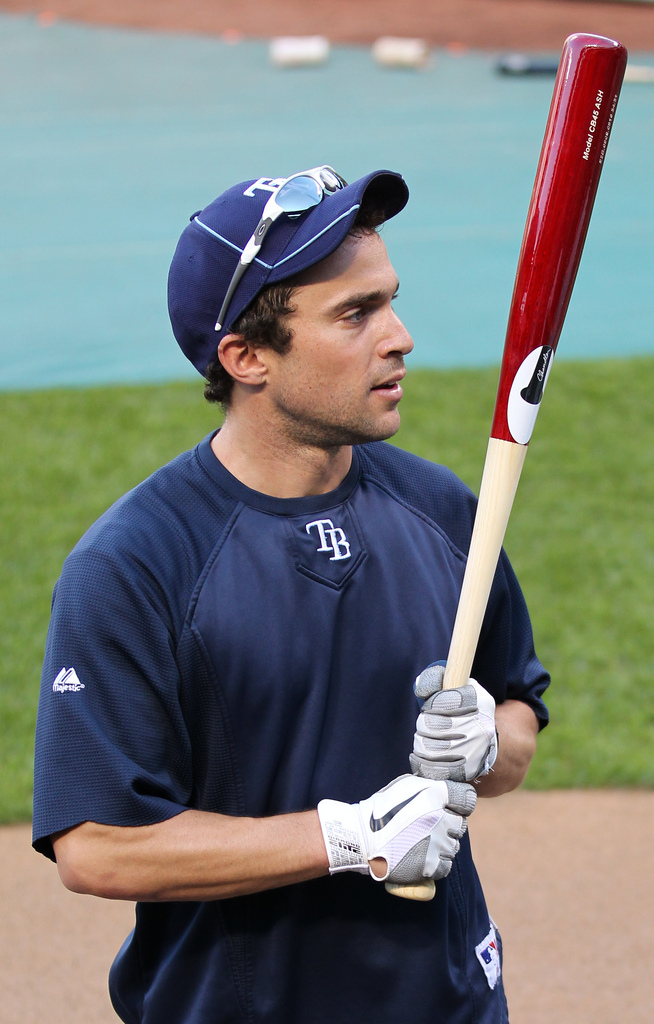Since the publication of Moneyball, the revolutionary book on statistical analysis entering the ranks of pro baseball, the strategy powering in-game decisions each year has become ever more scientific and data-driven. And even with the gradual, begrudging acceptance of "analytics" by baseball purists, the science and its number-crunchers existed mostly upstairs in the back-office somewhere, with data reports and specific recommendations making their way to the manager's office near the field.
But now, 15 years after Michael Lewis' influential work upended Major League Baseball's old-school protocols, we're on the verge of having that once-reviled stat geek ... in the dugout, in person – in uniform – dispensing advice directly to the manager during the game.
That scenario hasn't happened yet in the big leagues. But with this hallowed threshold having been crossed in lower-tier venues – last month during spring training by the Philadelphia Phillies and the Tampa Bay Rays, and last season by a minor-league affiliate of the Houston Astros, the defending World Series champions – MLB's day is clearly right around the corner.
“The reality is this is going to be the norm in baseball. ... We see what the future is going to be," said Morgan Ensberg, the manager of the Tri-City ValleyCats, the Astros' single-A team in upstate New York. "Other teams may see that as something that’s silly," added the former major-league veteran, speaking to the Wall Street Journal. "But if other teams really look at what the future’s going to look like, it’s going to be having an analyst on the bench.”
For three months starting last June, Ensberg welcomed Sig Mejdal into the dugout's inner sanctum as the team's new "development coach." Mejdal, the Astros' lead statistical analyst, who as a trained engineer previously worked for NASA and Lockheed Martin, took his place in the clubhouse, suiting up in uniform among the players and other coaches. Despite having no practical, on-field baseball experience, Mejdal was brought in to help all team personnel make use of all the statistical resources and technologies available to the game today. He also took the field, hit balls during pre-game practices, rode the bus and ate dinner with the players.
"I thought it would be a great opportunity for him to have a different type of experience, to be in uniform, to be with a staff, to understand from their perspective what they think about, how they go through the season," said Astros' GM Jeff Luhnow, announcing the move last year, as reported by the Houston Chronicle. "I think we're going to learn a lot as an organization by having him be with the players and the staff basically 24/7 for the course of a few months."
Why does someone like Mejdal have to be in the dugout? Can't his information just be sent to the manager in real-time during the game? Actually, in the majors the answer is no, as there is a specific rule preventing the practice:
"No club shall use electronic equipment, including walkie-talkies and cellular telephones, to communicate to or with any on-field personnel, including those in the dugout, bullpen, field, and – during the game – the clubhouse," reads a memo issued to all teams. "Such equipment may not be used for the purpose of stealing signs or conveying information designed to give a club an advantage."
 One example of analytics-driven managing is the practice of defensive shifting, which nearly every MLB team now employs in some fashion. It calls for moving players from their long-held, traditional positions to spots on the field where, statistical analysis of opposing players shows based on past performance, they are more prone to hit the ball. Once considered blasphemous, defensive shifting is now commonplace. Data on specific pitcher-batter matchups are also frequently used by managers to determine overall strategy, as well as what to do specifically in pivotal situations.
One example of analytics-driven managing is the practice of defensive shifting, which nearly every MLB team now employs in some fashion. It calls for moving players from their long-held, traditional positions to spots on the field where, statistical analysis of opposing players shows based on past performance, they are more prone to hit the ball. Once considered blasphemous, defensive shifting is now commonplace. Data on specific pitcher-batter matchups are also frequently used by managers to determine overall strategy, as well as what to do specifically in pivotal situations.
As for the Phillies, they hired former major leaguer Sam Fuld, who as a player was an early adopter of analytics and their potential. This year the team gave him the position of major-league player information coordinator, responsible for boiling down all the data and delivering it in a way that players and coaches can understand.
Fuld, who attended Stanford before logging eight years in the big leagues with five teams, including Tampa Bay, (photo credit: flickr, via Google Images) serves as a liaison between the analytics team and the team in uniform. He will not wear one himself or be situated in the dugout during games. But Fuld will travel with the Phillies throughout the season, giving the uniformed coaches, who work alongside first-year manager Gabe Kapler, the necessary information they need by game-time.
For generations, statistics have been the currency of baseball. You had to master them in any discussion to make your case. And it appears, not in the too-distant future, qualitative coaches armed with advanced stats will be making their case directly to their manager, and someday they'll likely to be as commonplace in the dugout as batting gloves and bubblegum.




